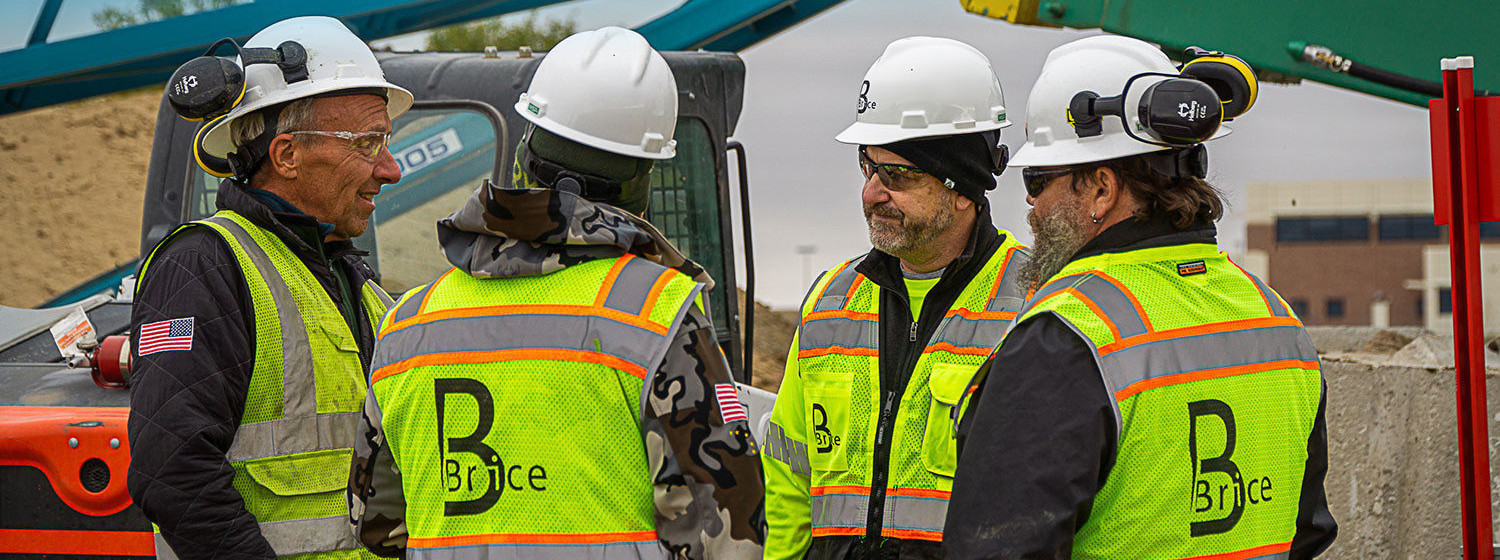Client: Air Force Civil Engineer Center
Location: Shemya Island, Alaska
Scope of Work:
- Asbestos abatement
- Structural demolition
- Demolition and removal of hangar foundation slabs
- Stockpile demolition debris
- Remove and barge salvageable lumber and materials off island
Brice performed the demolition of three unoccupied, dilapidated and decayed wooden hangars whose original construction dated back to World War II. Shemya Island’s harsh climate had damaged the hangars beyond repair. The hangars posed an environmental risk and occupied land that could be used in the future to support the EAS mission. Our scope of work included asbestos abatement, removal of utilities, miscellaneous appurtenances, roof demolition, structural demolition, and the demolition and removal of the foundation slabs. Due the harsh and often unpredictable weather in this region, Brice actively monitored the weather using a wind gauge to ensure the safety of the field crew working at heights as well as crane operations.
Brice first performed asbestos abatement and provided a Notice to the Alaska Department of Labor and Workforce Development 10 days prior to the work. We then removed the roofs and trusses on all three hangars. Large sections of roof were marked for cutting. Each section was rigged to the lattice boom crane for support, cut apart from the rest of the structure with chainsaws, and then transported by crane to a temporary staging area located adjacent to the hangar.
Brice then demolished the doghouses attached to the sides of the hangars using wet methods and excavators, as portions of the structures may have still contained ACM deemed not safe for removal by hand. The doghouses were continuously soaked using a water truck while an excavator pulled the structures down and stockpiled the debris in a temporary staging area.
Next, Brice removed the structural walls of the hangars using chainsaws and the lattice boom crane. Once the base and horizontal sectional cuts were completed, the crane dropped the wall sections into a temporary staging area until the debris was transported to scrap piles. The concrete foundations were last. We used a heavy duty commercial concrete cutting saw to cut a grid into the foundations, allowing the foundation to be separated into manageable sections for the excavators and loaders to easily remove the concrete and offload the chunks into a concrete debris pile for disposal.
We processed demolition debris for removal from the island via barge or for disposal in the local landfill. In accordance with requirements to minimize landfill waste, successfully Brice salvaged 40% of the old growth wooden timbers used to construct these WW2-era hangars. We transported the timber back to Anchorage for re-use off-island.
Despite access to historical drawings, there was minimal detail about the original construction of the hangars including fastening systems, which presented challenges while deconstructing and demolishing the structures. Brice moved methodically through the demolition of the first hangar, encountering a plethora of bolts, screws, nails, and other unknown types of fasteners, some of which were as big as railroad spikes, that often broke the chainsaw chains. Through trial and error, we continuously applied lessons learned throughout the demolition process to enhance efficiencies and safety. Brice successfully completed the project early by applying lessons learned from the six-week demolition of Hangar 2, to the demolition of Hangars 3 and 4, which were each completed in four weeks.
